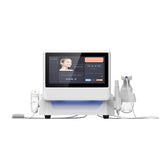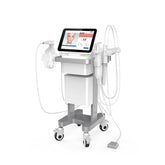Beauty Science Guide: Learn the basics of beauty care and common misconceptions
The beauty industry has flourished in recent years and has become an indispensable part of modern people's lives. Whether through skin care, makeup, medical beauty, or with the help of advanced beauty equipment, people are constantly pursuing healthier and more beautiful skin. However, in the process of beauty, there are also many misunderstandings and misconceptions. This article will provide you with a comprehensive beauty science guide from the aspects of basic knowledge, common misunderstandings, scientific advice, etc.
1.Basic knowledge of skin care
(1)Structure and function of the skin
The skin is the largest organ in the human body and is divided into three layers: epidermis, dermis and subcutaneous tissue. It is not only a barrier to the body, but also participates in functions such as temperature regulation, sensory conduction, and excretion. Understanding the structure of the skin helps to better carry out daily skin care.
Epidermis: The outermost layer, containing the stratum corneum, is responsible for protection and waterproofing.
Dermis: The middle layer, containing collagen and elastic fibers, gives the skin elasticity and firmness.
Subcutaneous tissue: The innermost layer, mainly composed of adipose tissue, provides buffering and insulation.
(2)Common skin care steps
Scientific skin care steps help keep the skin healthy and improve its texture and appearance. The following is a basic skin care process:
Cleaning: Remove dirt, oil and makeup residue from the surface of the skin to prevent pores from clogging.
Moisturizing: Use moisturizer or lotion to lock in moisture and maintain the water and oil balance of the skin.
Sunscreen: UV rays are one of the main causes of skin aging, and using sunscreen every day is the key to preventing photoaging.
Antioxidant: Antioxidant essence can resist the damage of free radicals and delay skin aging.
Special care: According to personal needs, essences, masks, etc. can be used for deep care.
2.Common misunderstandings in beauty
(1)"Natural" skin care products are safer
Although many people believe that "natural" or "organic" skin care products are safer, this is not actually the case. Natural ingredients are not necessarily suitable for all skin types, and some natural plant extracts may even cause allergies. In addition, natural skin care products may also contain ingredients that have not been rigorously tested, so be careful when using them.
(2)Skin problems can be completely solved by skin care products
Many skin problems, such as acne, spots, severe dryness or aging problems, are often not just caused by external reasons, but are closely related to hormone levels, lifestyle habits, diet and other factors in the body. Skin care products alone may not be able to completely solve these problems. It is necessary to start from multiple aspects inside and outside, including adjusting lifestyle, diet and seeking help from professional doctors.
(3)"More" is "better"
Many people think that the more skin care products are used, the better the effect. However, excessive skin care may damage the skin barrier and cause sensitive or allergic reactions. The right amount of skin care products can achieve the best effect. Excessive cleansing, frequent exfoliation or excessive use of active ingredients will burden the skin.
3.The role and use of beauty instruments
With the development of technology, beauty instruments have become a popular choice for daily skin care. Different beauty instruments have their own unique functions and applicable groups.
(1)LED light therapy device
LED light therapy devices stimulate skin cells through light of different wavelengths to help repair, anti-inflammatory or anti-aging. Common blue light is used to inhibit acne, and red light is used to promote collagen production and improve wrinkles.
(2)Radio frequency (RF) instrument
RF beauty instruments use the heat generated by high-frequency current to act on the deep layers of the skin, stimulate the reorganization of collagen and elastic fibers, and achieve the effect of firming the skin. They are often used in anti-aging care.For example,Newangie RF Tightening Lift EMS Facial Electromagnetic Stimulation Machine.
(3)Ultrasonic infusion instrument
Ultrasonic infusion instrument uses high-frequency vibration to better introduce the active ingredients of skin care products into the deep layers of the skin, improve the absorption rate of skin care products, and promote blood circulation and improve skin texture.
(4)Negative pressure suction beauty instrument
This instrument uses negative pressure suction to help clean pores, remove blackheads and excess oil. It is suitable for oily and mixed skin, but not for sensitive skin.
4.Scientific beauty advice
Understand your skin type: Different skin types (oily, dry, mixed, sensitive) require different care methods. Choosing the right skin care products and instruments is the first step to effective skin care.
Adhere to basic care: Cleansing, moisturizing, and sun protection are the three basic steps of daily skin care, and any complex care procedures should be built on these foundations.
Step by step: When introducing new skin care products or beauty instruments, the frequency of use should be gradually increased to observe the skin's reaction and avoid excessive stimulation.
Regularly consult professionals: For complex skin problems or medical beauty needs, it is recommended to regularly consult a dermatologist or professional beautician to obtain personalized advice and treatment plans.
5.Conclusion
Beauty is not just a change in appearance, but also a pursuit of health and a choice of lifestyle. In this era of complex information, only by treating beauty rationally and scientifically can we truly achieve the effect of both internal and external beauty. Through correct skin care methods, reasonable use of beauty equipment, and avoiding common misunderstandings, you can have healthy and beautiful skin and enjoy a confident life.






Leave a comment
All blog comments are checked prior to publishing